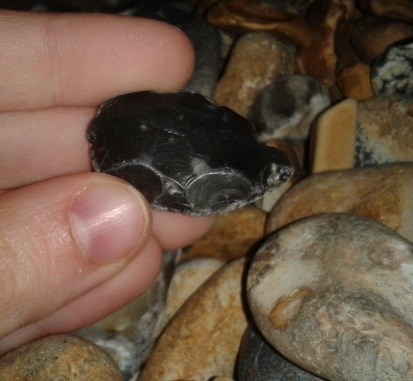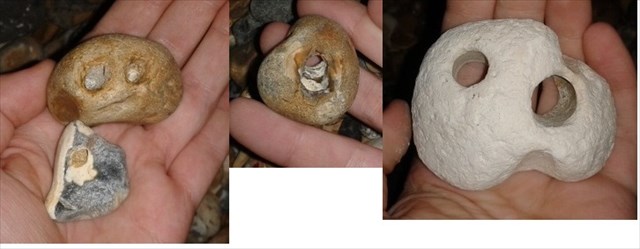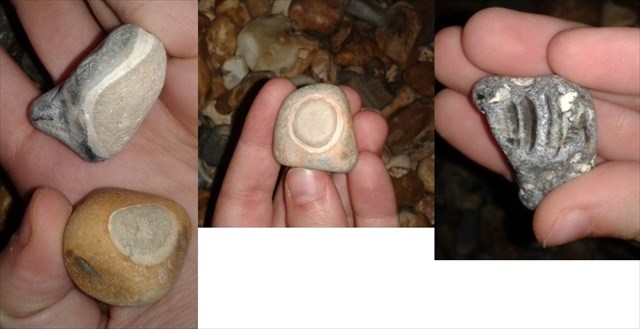Introduction - why is the beach pebbly rather than sandy?
Sand is formed from the breakdown of rocks, shells, glass etc. However, the composition of most of the south east coast is not conducive to sand formation, because the chalk is too soft and the flint too hard. The chalk dissolves and gets washed away while the embedded flint rolls around the sea floor, becoming rounded.
Thus, the beach is largely composed of flint pebbles, though other pebbles from further afield also occur. If you visit at low tide, you will see some sand on the lower part of the beach where the hard flint has eventually been broken up.
Pebbles are moved along the South Coast from West to East by longshore drift, caused by the wind and tide. So, Brighton pebbles may have come from chalk cliffs further down the coast. Longshore drift is a major cause of coastal erosion, so many methods have been devised to reduce it.
The flint pebbles come in many different colours, depending on whether they have been trapped inside chalk, sand or clay, which stains them.

Image: Unstained Flint, with stained flint in the background

Image: Stones with holes. The rightmost one is chalk.

Image: Fossils. The round ones are likely some kind of echinoid, maybe Conulus or Echinocorys. The rightmost one is actually banded flint, which is often mistaken for a fossil but is actually a geological phenomenon.
To log this cache as found, first please email me through my profile or the message centre, with your answers to the following questions. You do not need to wait for a reply before logging, though I aim to respond within a day.
1. Facing the sea, look to your right. You should see a long structure on the beach, what is it and what is its function? (The correct answer is not the West Pier or the i360 tower!)
2. Measure the average diameter of a pebble from the top, middle and bottom of the beach. Do you see a trend and can you explain it?
3. What are chalk and flint? How are they formed?
4. On the beach, it is very easy to find pebbles with naturally formed holes in them (known by such names as adder stones, hag stones, witch stones or snake's eggs). Can you guess or find out why this is particularly common in flint shingle? (Hint: your answer to Question 3 may help).
5. Fossils are also very easy to find on the beach. Why are there so many good fossil sites on the South East coast? (Hint: this should be partly answered by your response to Question 3).
6. See if you can find a piece of chalk. What makes chalk useful as a writing implement?
7. (Optional) Take a photograph of each cacher logging at GZ and Brighton Pier in the background (so as not to reveal the answer to question 1 in the photo). If you don't want your face to be in the photo, it's no problem, take a picture of your GPSr or a piece of paper with your caching name on it. Upload it with your log.
The placement of this cache was inspired by the many occasions I have enjoyed relaxing on this beach and sifting through the pebbles, looking at all the different features. I hope that you will gain the same enjoyment from visiting Brighton Beach.